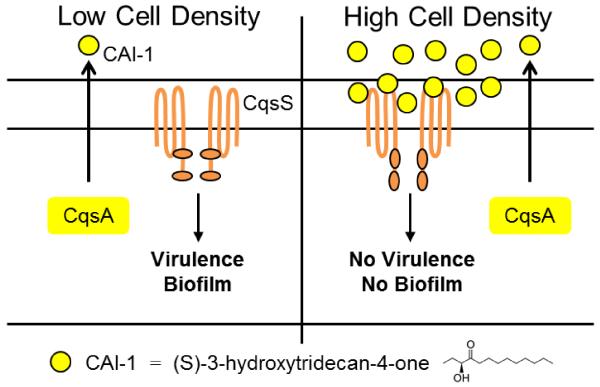Figure 1.
Simplified quorum-sensing pathway in V. cholerae. The CAI-1 autoinducer is produced by the CqsA enzyme. Released CAI-1 binds to the CqsS receptor, and alters CqsS phosphorelay activity. Left panel, at low cell density, and low CAI-1 concentration, signal transduction from CqsS results in virulence factor expression and biofilm formation. At high cell density, CAI-1 accumulates. Binding of CAI-1 to CqsS results in decreased virulence factor production and decreased biofilm production, allowing CAI-1 to be potentially used in antivirulence therapies for treating cholera. In the cartoon, CAI-1 is denoted by yellow circles. The structure of the molecule is shown below the cartoon for reference.

